Introduction
Physiotherapy is an essential part of your recovery following your operation.
The main areas of physiotherapy involvement are:
- Respiratory Management
- General mobility
- Rehabilitation
- Education
This page has been designed for patients that have undergone a variety of Thoracic Spinal surgeries. It will outline what to expect during your hospital stay, as well as your discharge from hospital.
Back to topExpectations following Surgery
You will be encouraged to mobilise by physiotherapists from day one post surgery. The physiotherapists will monitor and assess your ability to complete simple tasks and movements during your hospital stay to ensure you are safe to go home.
Any problems will be identified and treated as appropriate in conjunction with other members of the multi-disciplinary team.
Here is a rough guide, your progress will be discussed with you and the multi-disciplinary team:
Back to topActivities of daily living
The Physiotherapists and Occupational Therapists can give you tips to help with activities of daily living, such as getting dressed, how to complete the stairs safely, and how to sit comfortably.
The Physiotherapists will teach you the best way to get in/out of bed, up/down from a chair and how to do your exercises.
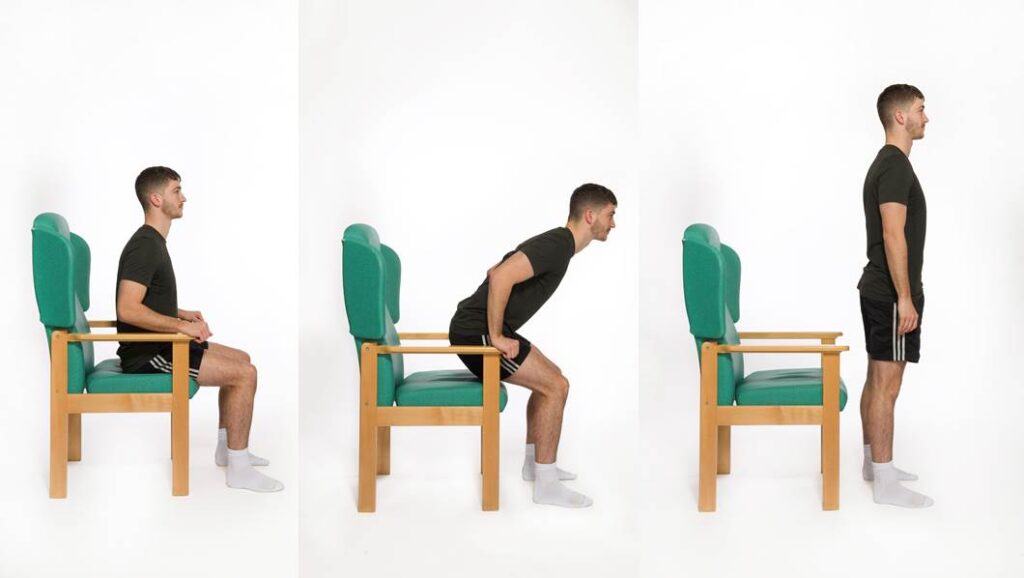
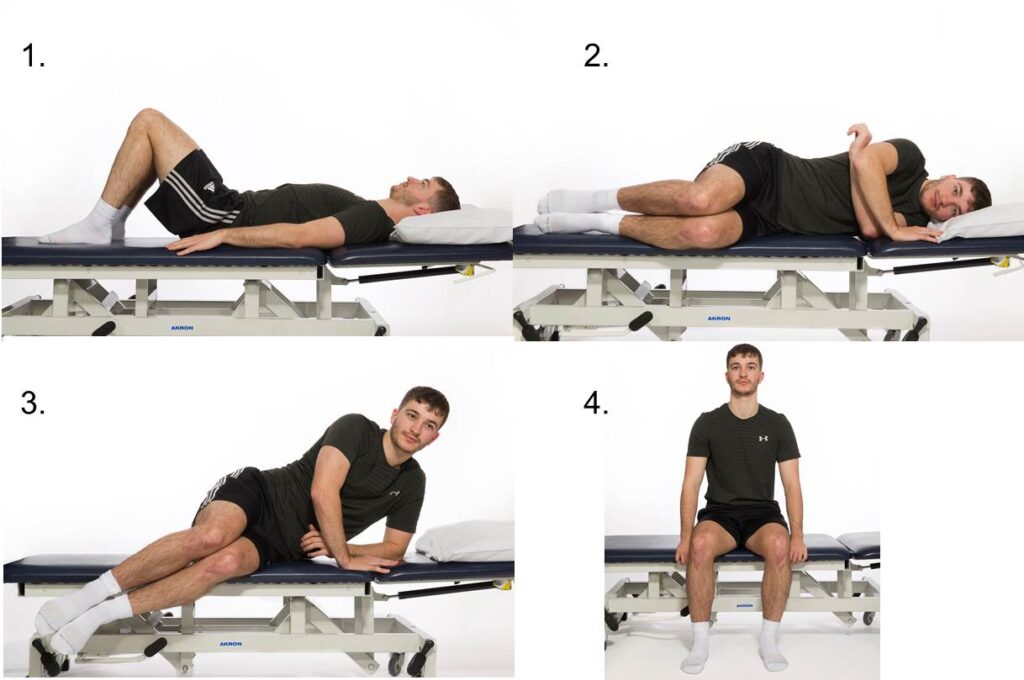
It can be common to feel sick and/or dizzy the first few times you sit up and get out of bed/chair, however this should settle over time. Sitting out regularly will also help with this.
Pain Relief
Following your injury or surgery, it is normal to experience some pain.
It is important to take regular pain relief to enable you to get up, move and manage any pain you are experiencing.
Post-operative Precautions
It is important to keep your body moving after surgery however there are a few things that will be helpful to avoid for the first 6-12 weeks (you will be guided on this).
1. No Excessive Bending
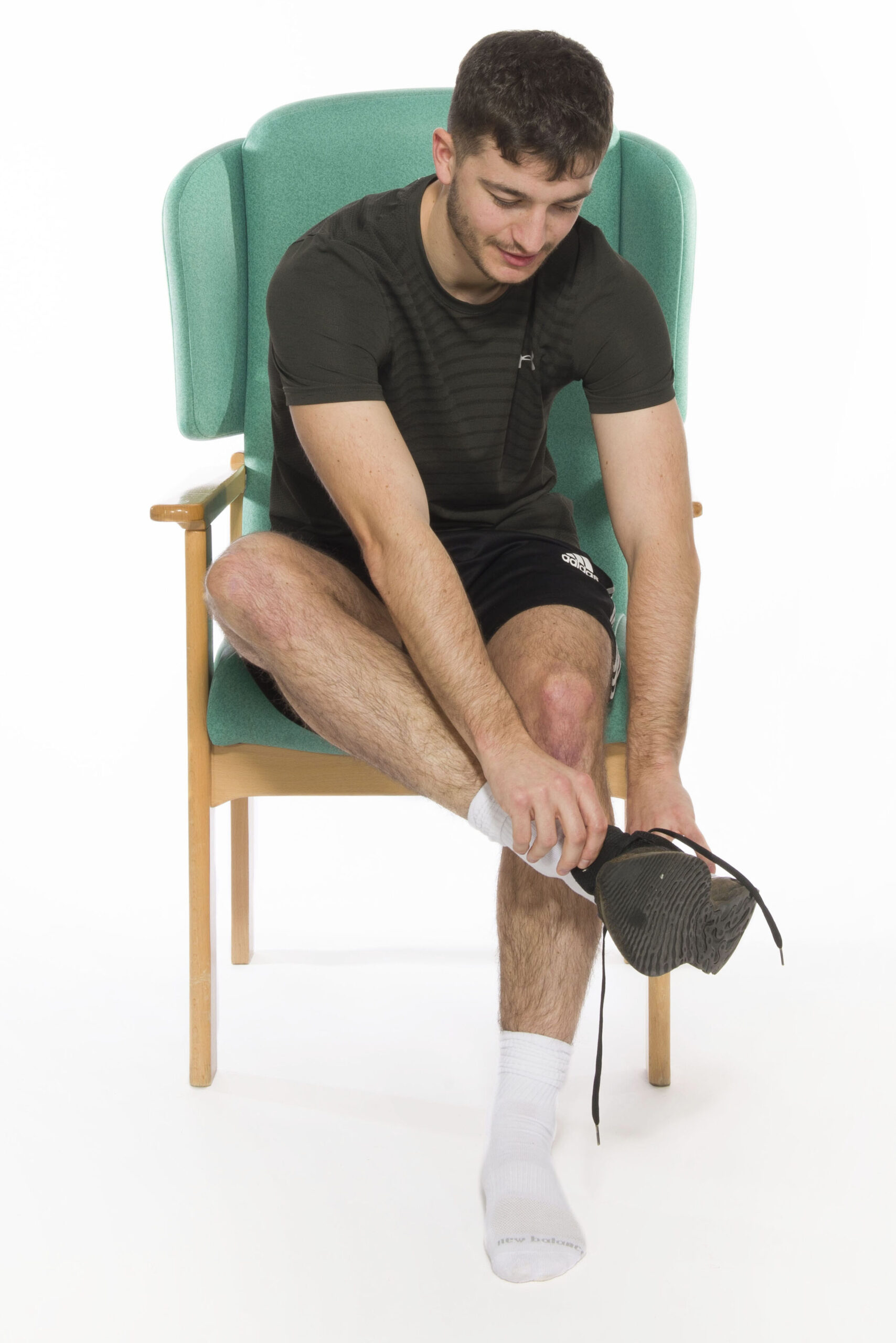
- You should avoid bending down towards your feet.
- To pick something up from the floor, bend at your knees, kneel, keep your back straight, and keep the object close to you.
- To put your socks on, bring your foot up to you instead of bending down to the floor.
2. No Excessive Lifting
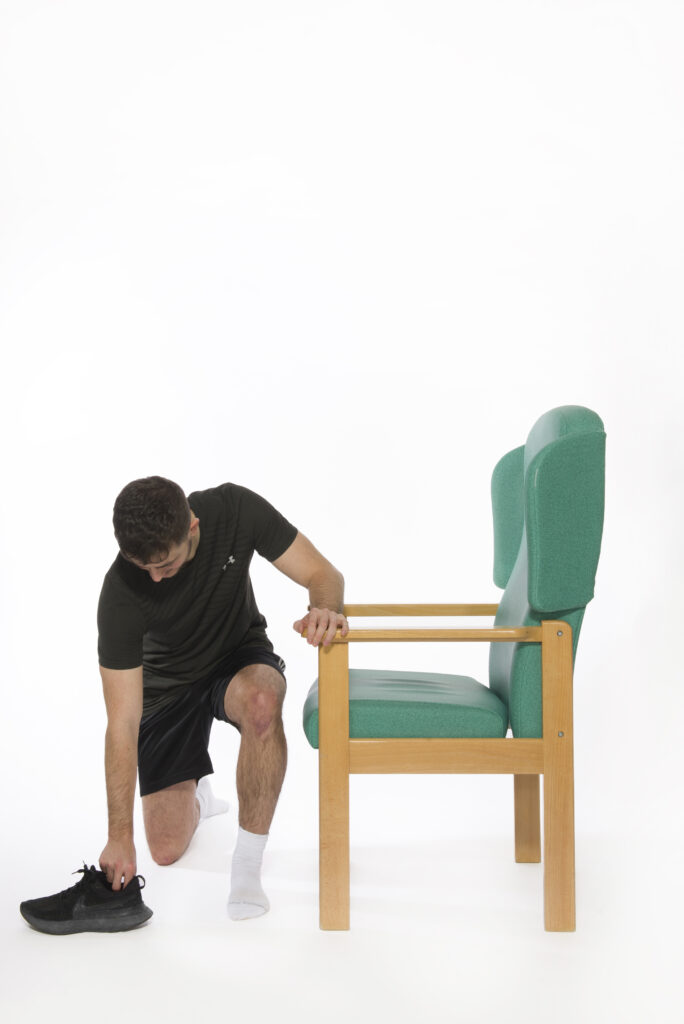
- Anything heavier than the jug of water given to you on the ward (approx. 1-2kg) is too heavy.
3. No Excessive Twisting
- Keep your shoulders and hips pointing in the same direction.
- To look behind you or to either side, turn your entire body.
4. Reposition yourself every 30-40 mins.
Posture
Sitting
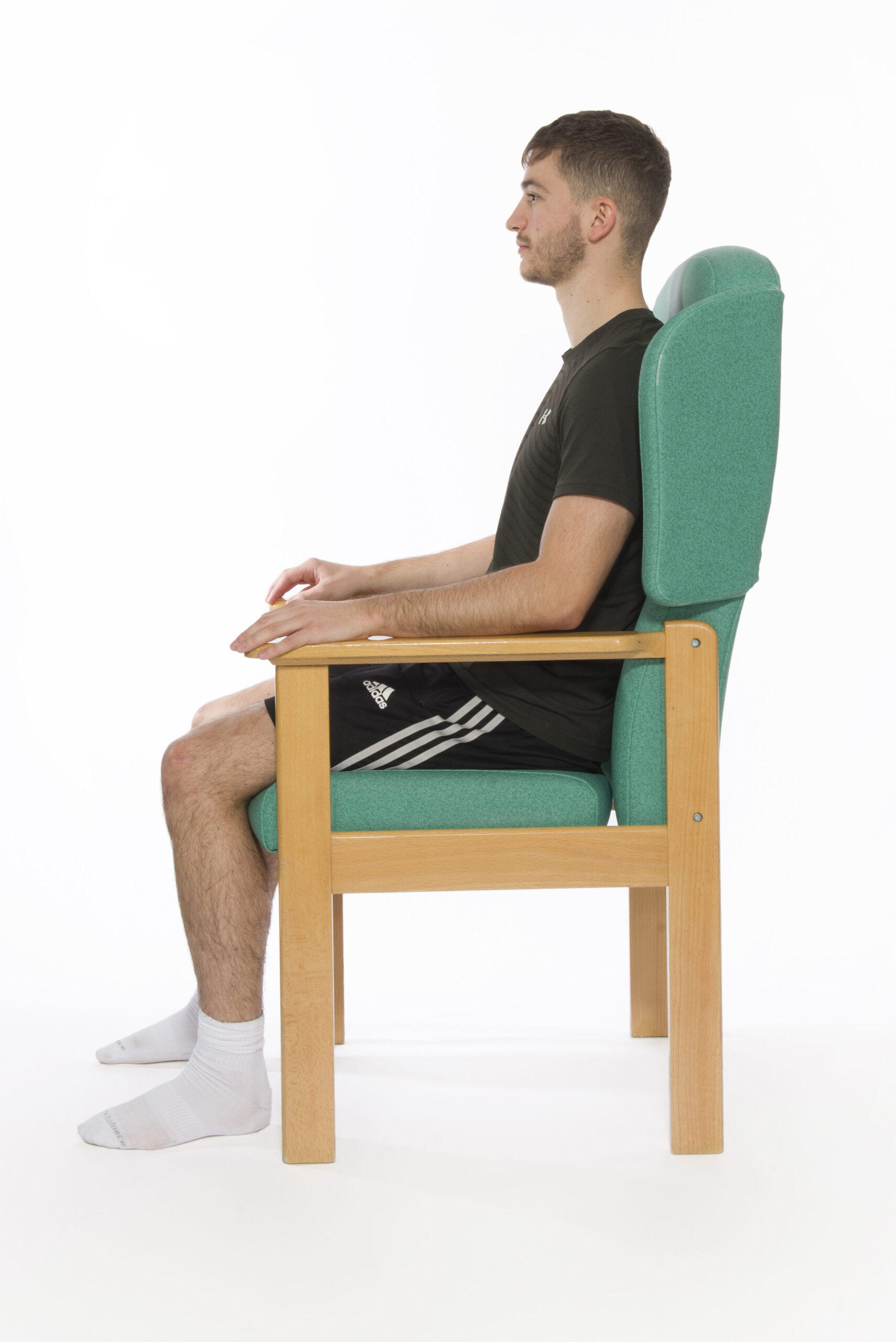
- Avoid sitting slumped for prolonged periods of time.
- Push your bottom to the back of the chair, use a cushion or rolled towel in the small of your back if more comfortable.
- Keep your feet flat on the floor to support your back.
- Limit periods of sitting to 30-40 mins.
Standing

- Keep your head level with your chin slightly tucked in
- Stand tall by looking forward and keeping your shoulders over your hips
- Relax your shoulders
- Gently tighten your stomach muscles by pulling in your lower abdomen.
Respiratory Management
Deep breathing exercises can begin immediately after your operation. Some people become chesty in the first few days following surgery due to extra phlegm production as a result of:
- Having an anaesthetic.
- Discomfort / pain from the wound site may affect your ability to complete a deep breath and cough.
- Reduced mobility in first few days after surgery.
- Pre-existing respiratory conditions eg. COPD, asthma, smoker
How to do deep breathing exercises:
Sit upright in bed / in a chair.
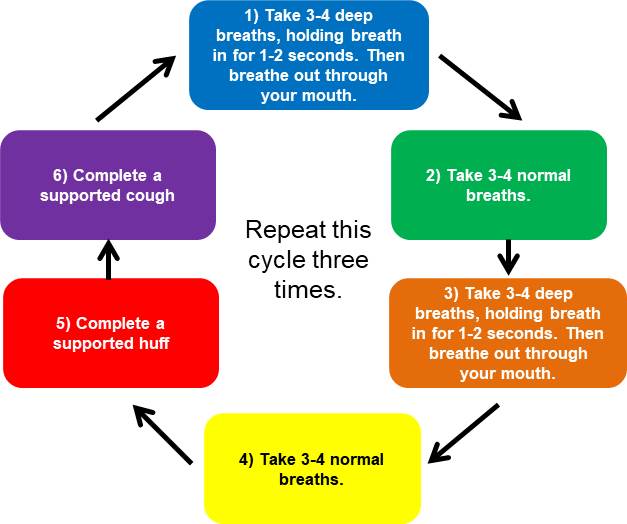
Aim to complete this every waking hour.
To do a huff: take a breath in and then force the air out quickly through an open mouth, as if you are steaming a mirror. If you have any phlegm in your throat, take a deep breath in and have a good strong cough. Afterwards, take normal relaxed breaths.
You may find that hugging / squeezing a rolled-up towel or pillow is more comfortable when you huff or cough.
Post-operative Exercises:
Complete five of each exercise, three times a day
1. Breathing Exercises – see ‘Respiratory Management’ section
2. Side-to-side Head Turns
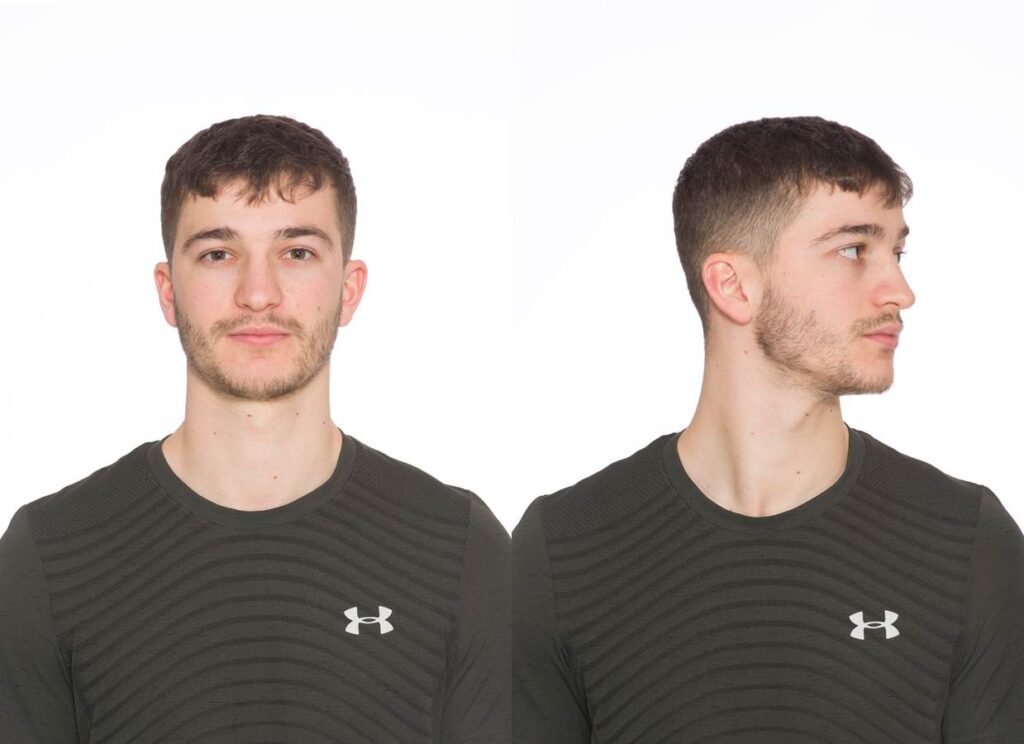
- Position yourself in an upright or semi-reclined position.
- Tuck your chin in and turn your head to one side and back to the centre.
- Repeat to the other side.
3. Head Tilts
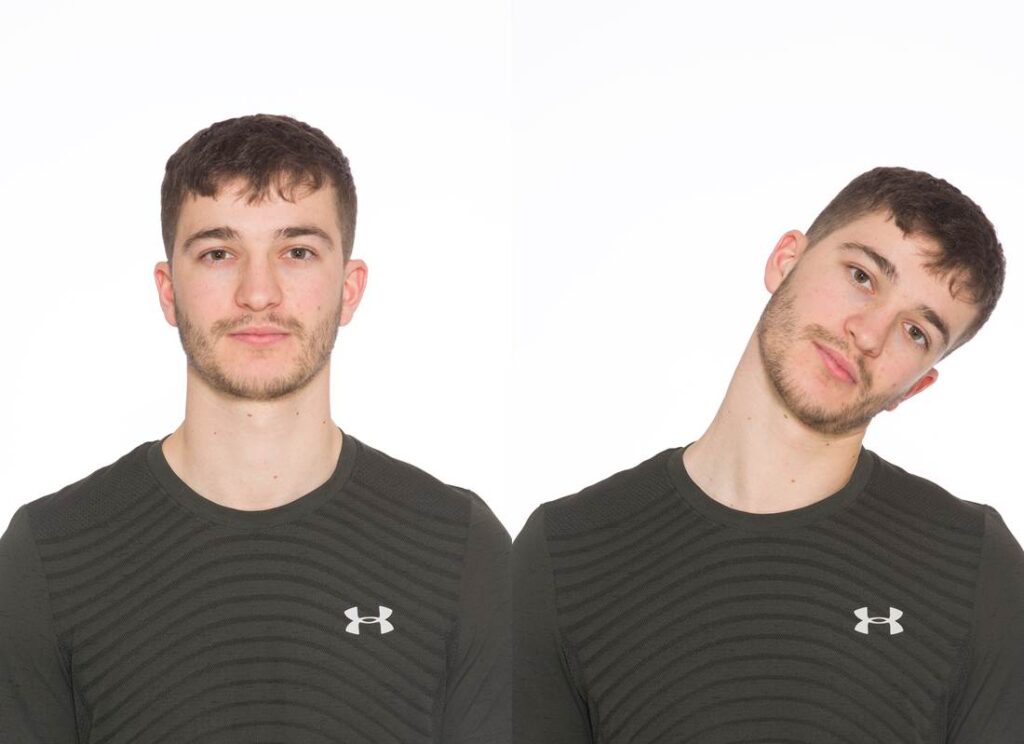
- Tuck your chin inward and pull yourself up as if there is a rope pulling the back of your head upward.
- Without turning the head, tilt your head sideways to bring your ear to your shoulder.
- Return to neutral position, then release chin tuck
- Repeat to the other side.
4. Shoulder Shrug and Circle
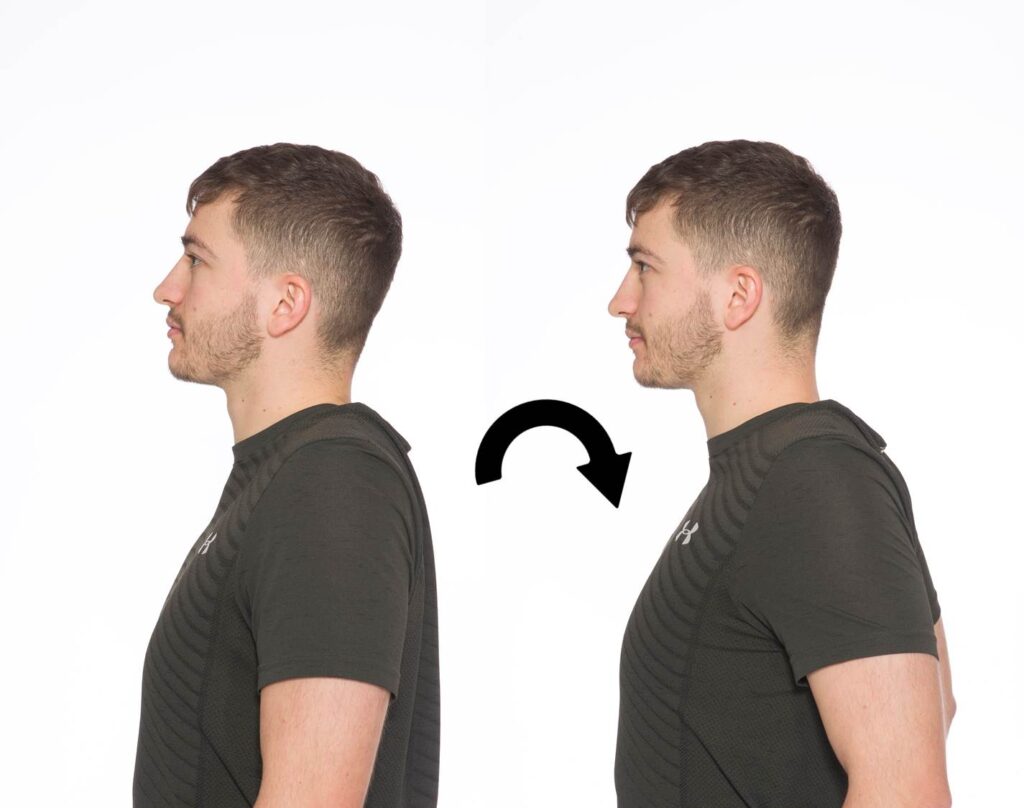
- Shrug your shoulders up towards your ears, then circle them back and down.
5. Shoulder Flexion
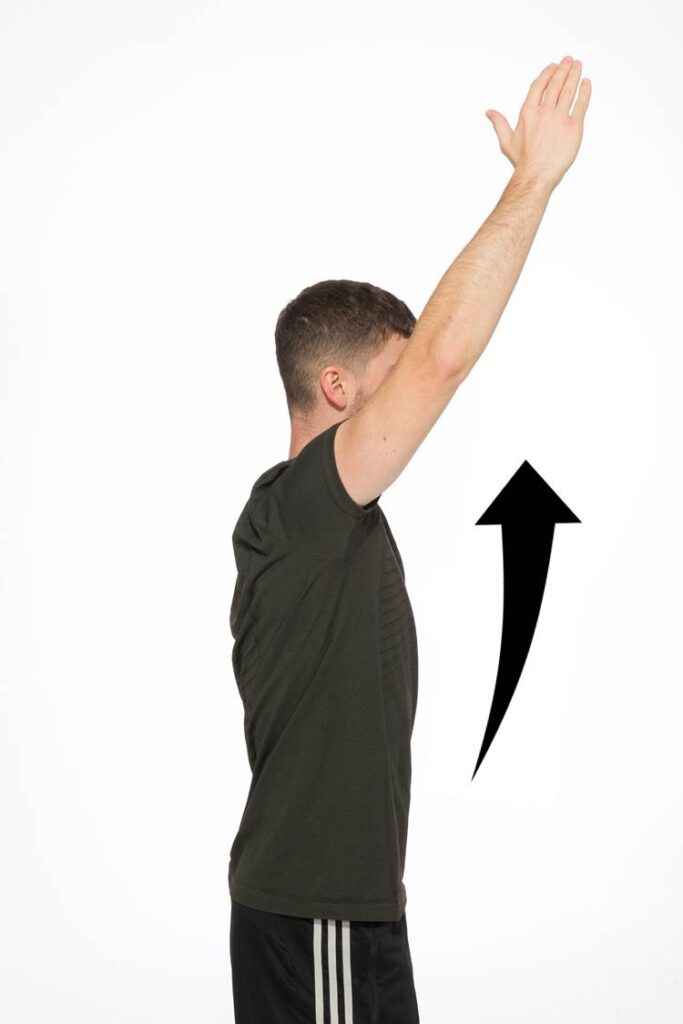
- Slowly lift one arm up to the ceiling. Repeat on the other arm.
- You can do this lying on your back or sitting in a supportive chair.
6. Pelvic Tilts
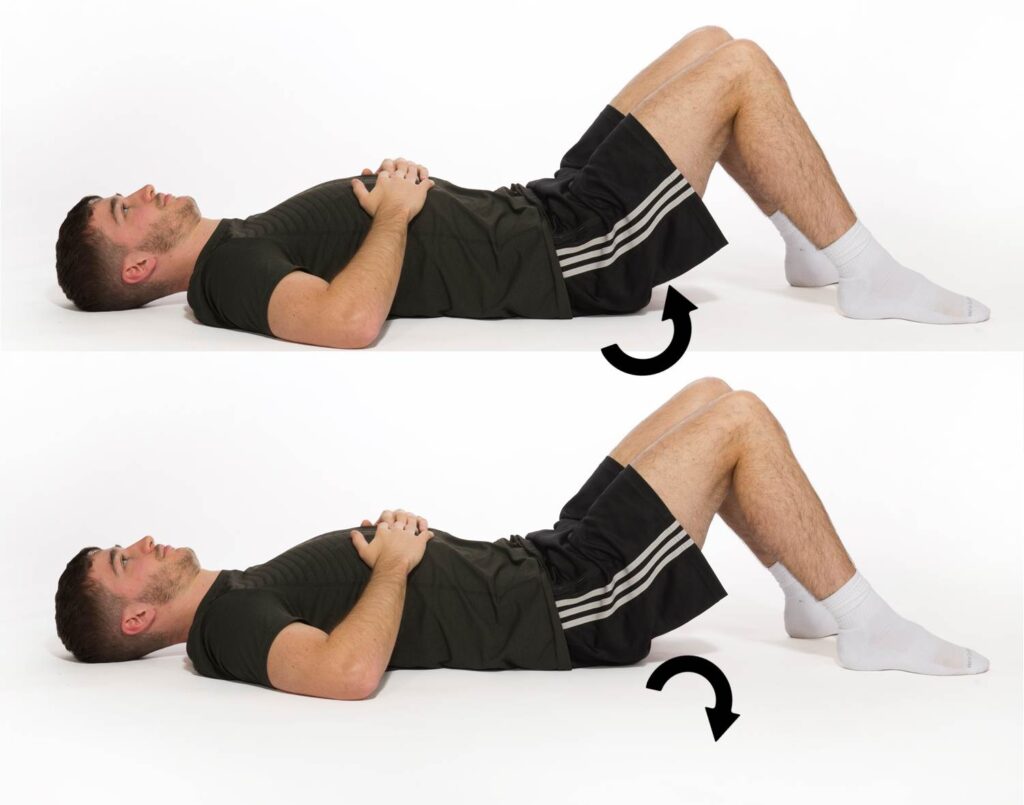
- Lie on your back with your knees bent.
- Gently flatten your lower back into the bed.
- Return slowly to the initial position and then gently arch your back, tilting your pelvis in the opposite direction.
- Return to neutral and repeat.
7. Activate Deep Abdominal Muscles
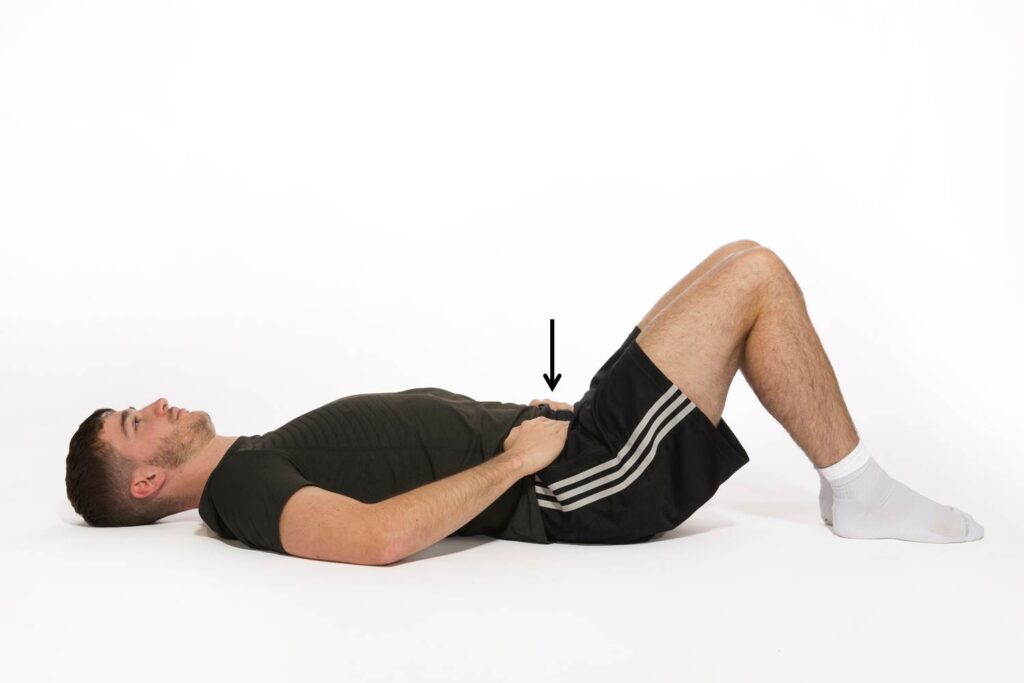
- Lay on your back with your knees bent. Gently draw in your lower stomach muscles and ‘lift your pelvic floor’ as if you are stopping yourself from passing water and hold for a few seconds.
- Similarly, tighten as if stopping yourself from passing wind.
- The aim is eventually to complete these at the same time.
You can also complete this in sitting or standing.
8. Glute Squeeze
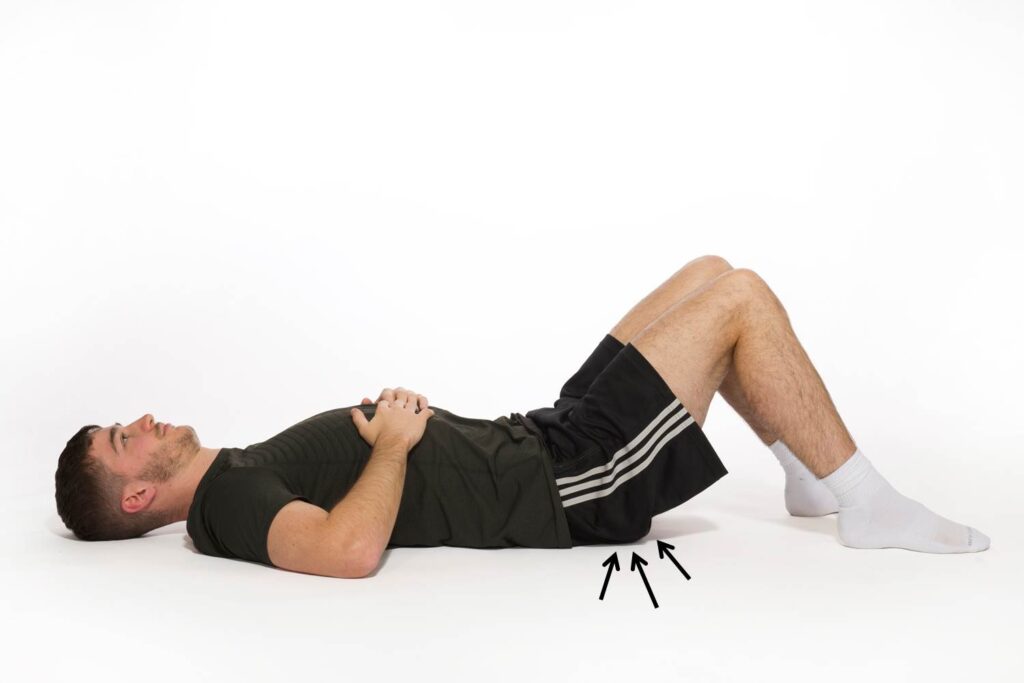
- Squeeze your buttock muscles gently, hold for five seconds then relax.
- This can be done lying on your back, sitting upright or standing.
9. Single leg knee to chest
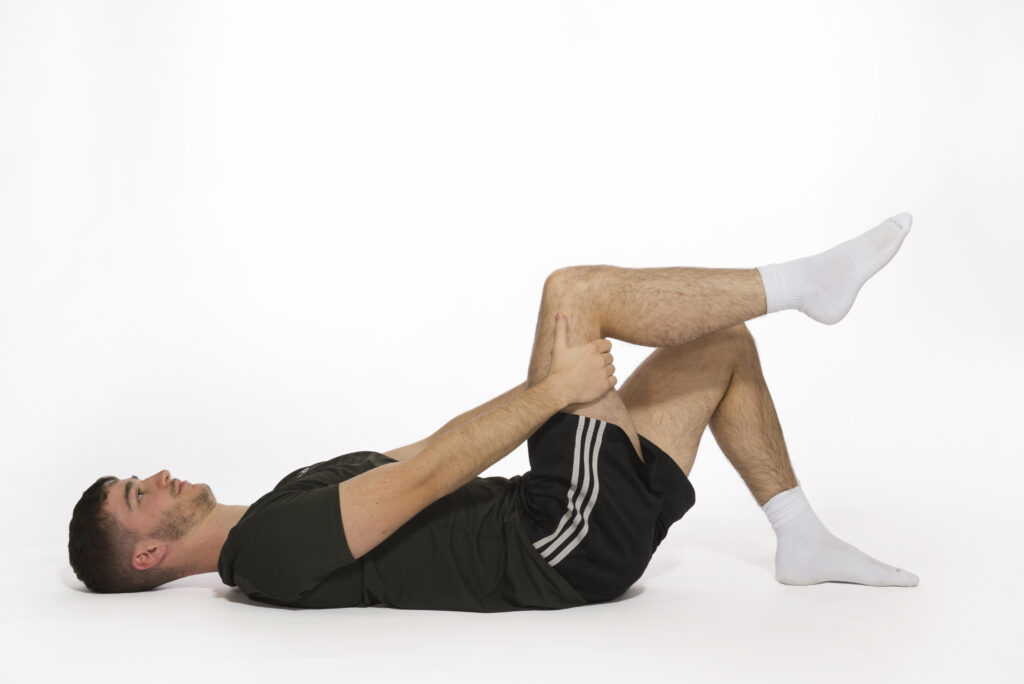
- Lie on your back and bring one knee up towards your chest slowly.
- Return to your starting position.
- Repeat with the other leg.
Once Home:
What to expect after your operation
Once home, it is important to gradually build up your exercise tolerance with increasing your walking distance and getting outdoors where possible.
Back to topFollow-up
You may be referred for further physiotherapy by the physiotherapists on the ward or from Spinal Clinic if it is indicated.
The spinal nurses will call you around two weeks post-surgery where they can answer any questions you may have, following your discharge home.
You will usually have a follow-up appointment in the Spinal Clinic at six weeks post-surgery
If any concerns arise once discharged home, you can ring the ward that you were on and speak to any of the Spinal Physiotherapists or Nurses.
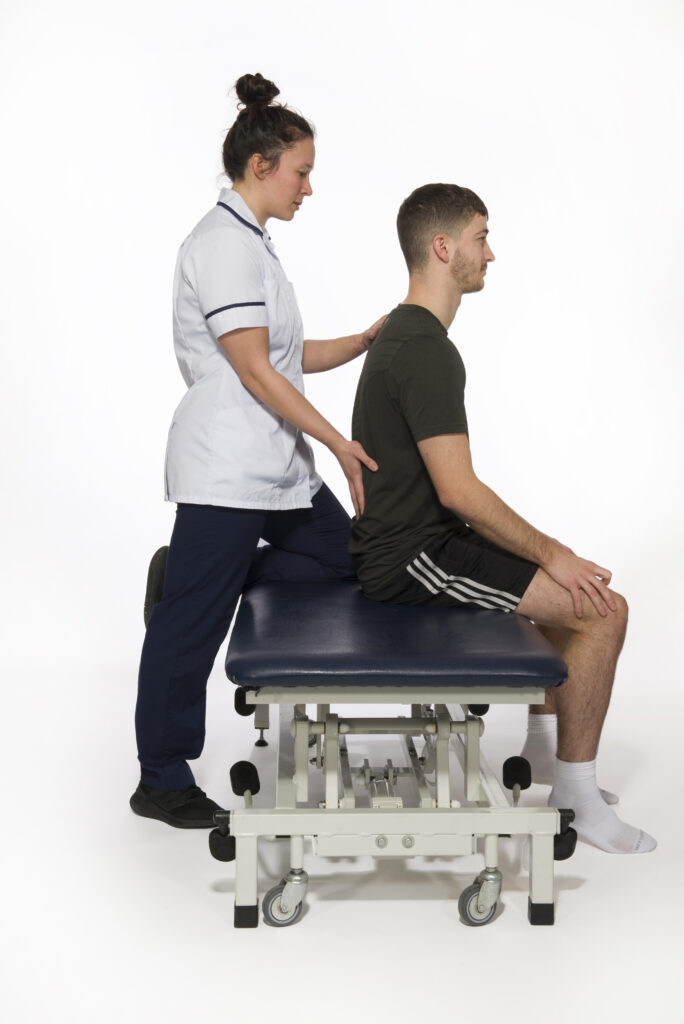
Recognising and Preventing Potential Complications
During your post-operative recovery period, you should contact the Spinal Nurses or your GP if you experience any of the following symptoms:
- A high or fluctuating temperature.
- Bleeding or leakage from your wound, increased swelling and/or redness at the wound site.
- Bladder or bowel changes.
- Wound pain not controlled by your prescribed pain killers.
- Swelling and/or pain in your thigh, calf or ankle that does not reduce with elevation.
If you experience sudden chest pain, or shortness of breath, you should call 999.
Back to topFurther Information and Support for Scoliosis Patients
The Scoliosis Association offers support and advice to anyone affected by scoliosis. Visit their website at www.sauk.org.uk or call their helpline on 020 8964 1166.
Contact Us
If you have any questions, please contact:
Clinical Nurse Specialist – Spinal Team
Ward L23
Ward L24
Ward L25
Ward L28
PALS (between the hours of 9am-4.30pm)
If you need physiotherapy advice or wish to speak with a physiotherapist, please contact the ward and they will contact the physiotherapy team to speak with you.
Alternatively, you can contact the Spinal Physiotherapists via email:
leedsth-tr.inpatientspinalphysio@nhs.net
For further information and links to websites and policies: www.leedsth.nhs.uk
Back to top